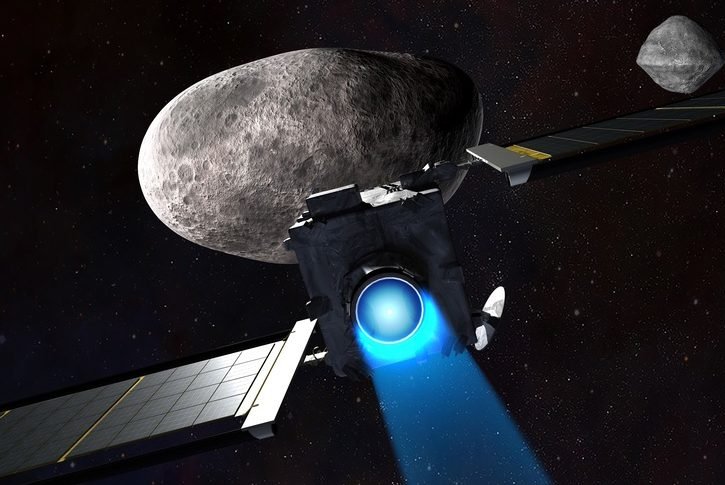1 of 3 | Redirecting near-Earth objects like asteroids before they impact the planet is a viable possibility, according to new research published Wednesday on the viability of NASA's Double Asteroid Redirection Test (DART). Image courtesy of NASA
March 1 (UPI) -- Redirecting near-Earth objects like asteroids before they impact the planet is a viable possibility, according to new research published Wednesday.
Conducted last September, NASA's Double Asteroid Redirection Test proved to be more successful than anticipated, according to the research published in the journal Nature.
In October, NASA confirmed the DART mission successfully altered the orbit of the asteroid Dimorphos, which orbits the larger Didymos asteroid.
That marked the first full-scale demonstration of asteroid deflection technology. Neither celestial body represented a threat to Earth.
"We can't stop hurricanes or earthquakes yet, but we ultimately learned that we can prevent an asteroid impact with sufficient time, warning and resources," University of Maryland astronomy professor and DART member Derek Richardson said in a release.
"With sufficient time, a relatively small change in an asteroid's orbit would cause it to miss the Earth, preventing large-scale destruction from occurring on our planet."
The findings confirm the feasibility of redirecting near-Earth objects as part of a planetary defense initiative.
"Pre-impact, we expected the impact to shorten Dimorphos' orbit by only about 10 minutes. But after the impact, we learned that the orbital period was shortened even more, reducing an ordinarily 12-hour orbit by slightly more than 30 minutes. In other words, the ejected material acted as a jet to push the moon even further out of its original orbit," UMD principal researcher Tony Farnham said in a statement.
"With this information, we have the context to make our conjectures and evaluate our work."
Spews of debris following impact also contributed to changing the asteroid's trajectory.
"There was so much debris ejected from the impact that Dimorphos was pushed approximately 3.5 times more effectively compared to being hit by the DART spacecraft alone," said Richardson.
The European Space Agency's Hera mission, scheduled to launch in October 2024, is expected to provide more insight to the DART mission's impact.















